Sarah Wyman Whitman (1842–1904) was an influential Boston artist and civic leader, best known for her work in stained glass and design. A trailblazer, she was the first female book designer employed by Boston publisher Houghton Mifflin and was among the founders of the Society of Arts and Crafts. From her studio, Lily Glass Works, she produced large and small stained glass commissions for churches and colleges such as Harvard’s Memorial Hall and Trinity Church in Copley Square.

Helen Bigelow Merriman (American, 1844–1933), Sarah Wyman Whitman, about 1906
Harvard University Portrait Collection, Radcliffe Institute for Advanced Study, Gift of Helen Merriman to the Schlesinger Library, Radcliffe College, 1909-10. Public domain, via Wikimedia Commons
After her marriage, Whitman studied art in France and in the studios of American artist William Morris Hunt and painter and stained glass designer John La Farge. Being one of a handful of female students likely inspired Whitman to champion equitable access to education for women and people of color. She was one of the founders of Radcliffe College and the School of the Museum of Fine Arts. She also supported Berea College, Howard University, and the Tuskegee Institute.
Isabella Stewart Gardner and Whitman had creative friends in common like author Sarah Orne Jewett and Boston Symphony Orchestra founder Henry Lee Higginson. They likely recognized each other’s talents in a white male dominated Boston art world and supported one another’s efforts. An early patron of Whitman’s work, Isabella purchased the sunrise landscape Newport Canal, Shropshire in 1878.
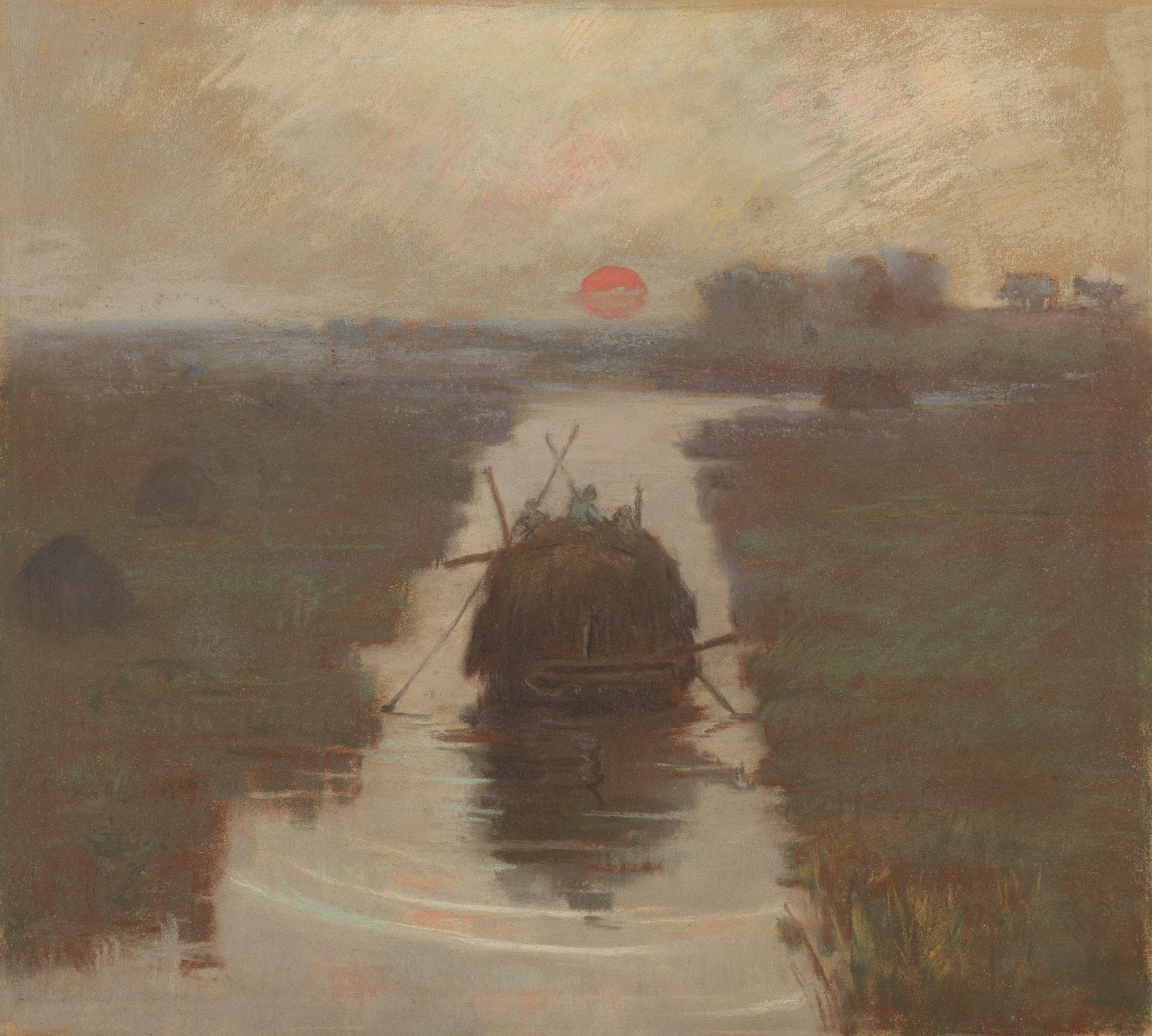
Sarah Wyman Whitman (American, 1842–1904), Newport Canal, Shropshire, about 1878
Isabella displayed this pastel near her desk in the Macknight Room
I was told at Doll’s [Doll and Richards Gallery], yesterday, that you had bought my Newport landscape, & I cannot resist telling you how much pleasure it gives me. I had a somewhat foolish sentiment in regard to this picture; I like to know that it has fallen into your friendly hands—while I do not fail to appreciate the ultimate compliment that lies in your caring to own it. I hope it will look its best for you.
— Sarah Wyman Whitman to Isabella Stewart Gardner, 7 APRIL 1878 (ARC.008200)
It is clear from the correspondence Gardner saved, now preserved in the Museum Archives, that the two women enjoyed a close friendship. Whitman’s letters are warm and effusive and contain plans to arrange visits with friends, attend lunches and concerts,“...and [to] speak of many things.”*
It’s no surprise that Gardner asked her talented friend to create the iconic design for her Museum’s corporate seal.
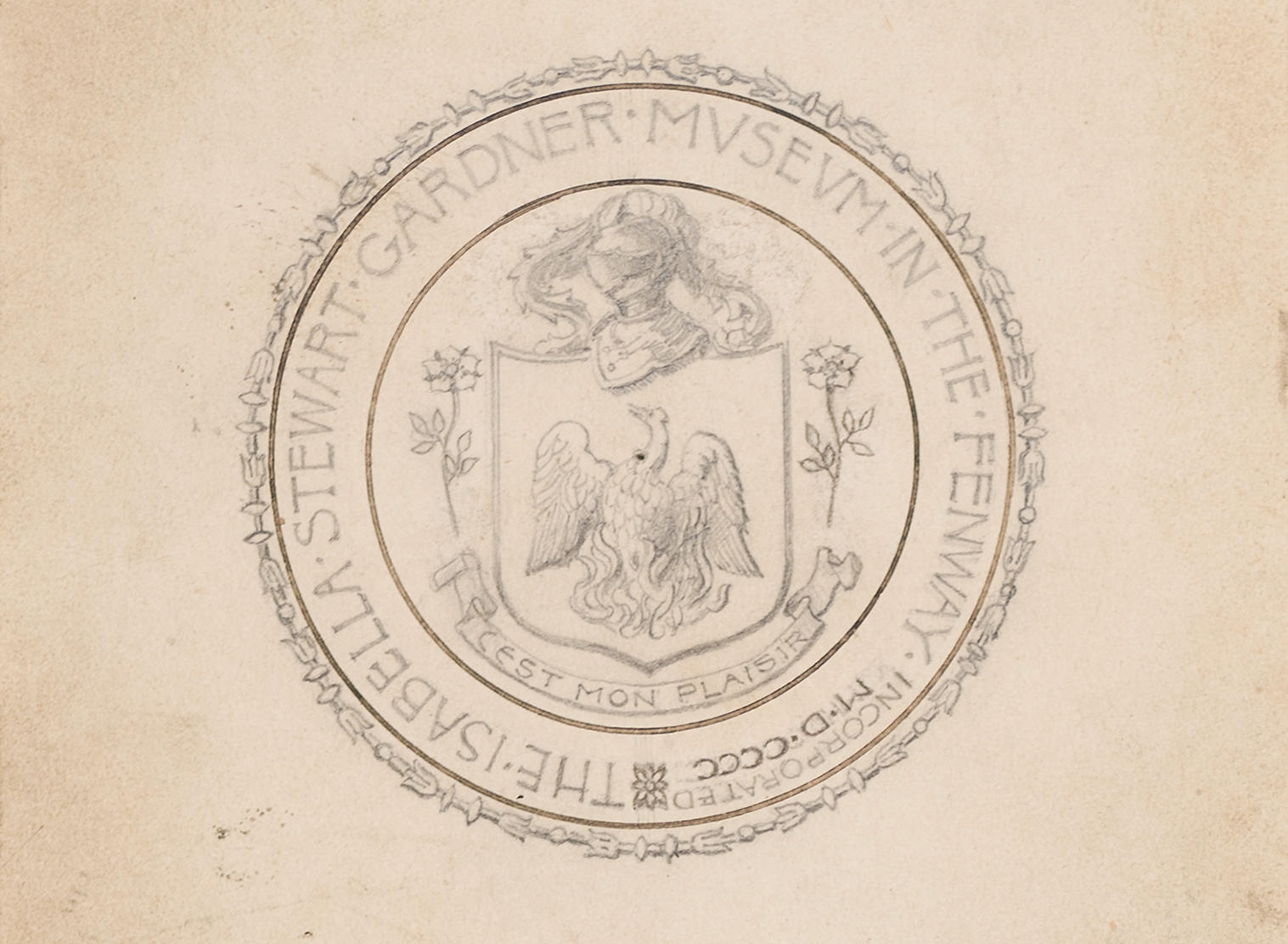
Isabella Stewart Gardner Museum, Boston (ARC.007386)
Sarah Wyman Whitman (American, 1842–1904), Sketch for the Isabella Stewart Gardner Museum’s Seal, 1900. Ink on paper.
Whitman’s design depicts a coat of arms encircled by laurel leaves, flanked by roses with the motto “c’est mon plaisir”—French for “it is my pleasure.” At the center of the coat of arms is a phoenix, the mythical beast who rises from the ashes reborn. As a symbol of rebirth and immortality, the use of the phoenix is fitting for the institution that Gardner directed to be preserved for the “education and enjoyment of the public forever.” The symbol could also be interpreted as biographical; Gardner persevered through loss and grief—first of her son, whose death she coped with by immersing herself in travel, music, and art. And later, in 1898, after the sudden death of her husband Jack, Isabella forged ahead with their plans to build a public museum for their art collection. The establishment of the Museum began a new phase of life for Isabella—one in which she found joy and pleasure, as the motto suggests.
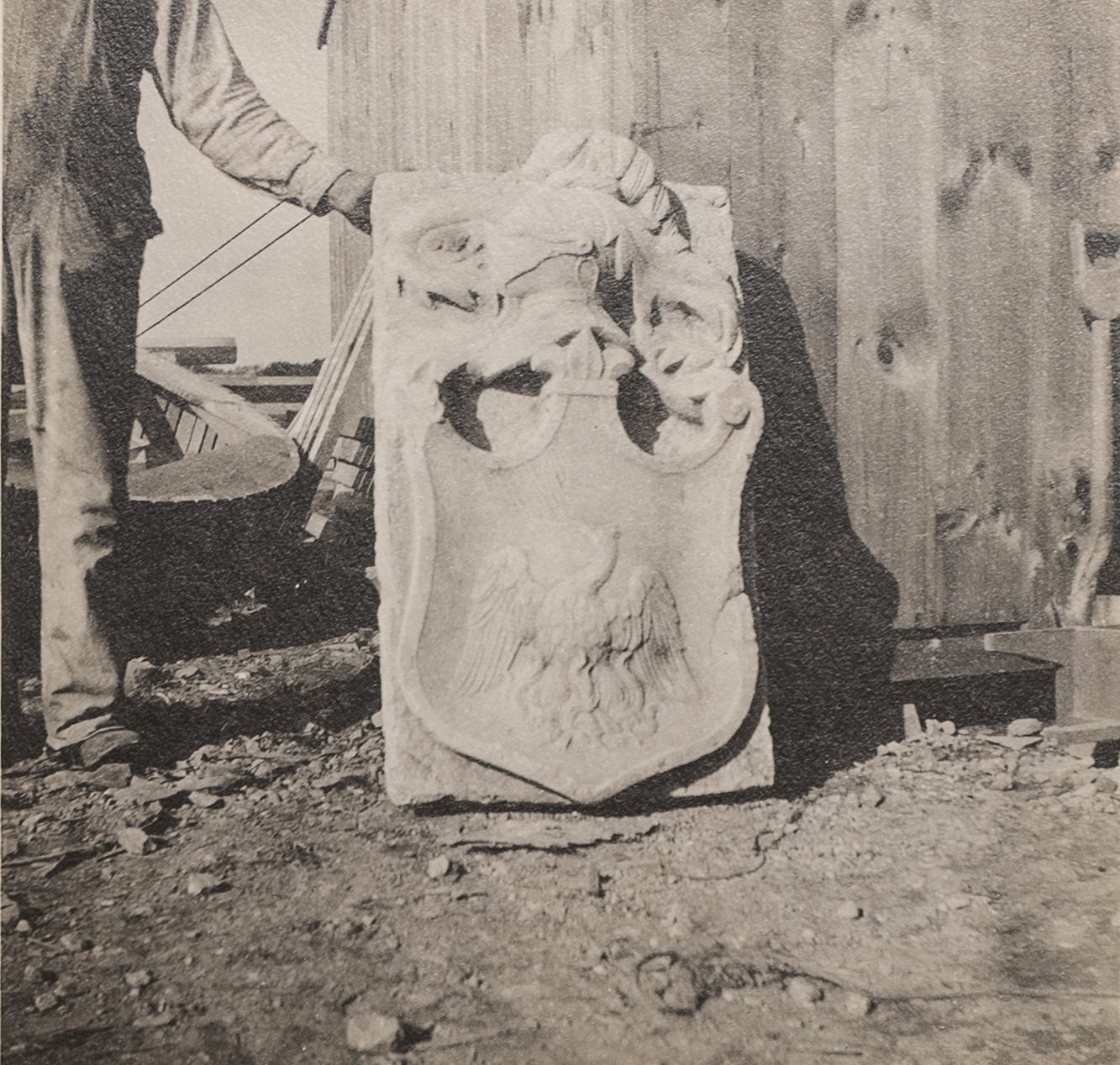
Isabella Stewart Gardner (1840–1924), Fenway Court During Construction: Crest of the Isabella Stewart Gardner Museum, 1900
In November of 1900, a sandstone carving of the crest was installed on the Museum’s facade, facing the Back Bay Fens parkway to greet visitors with its message of resilience.
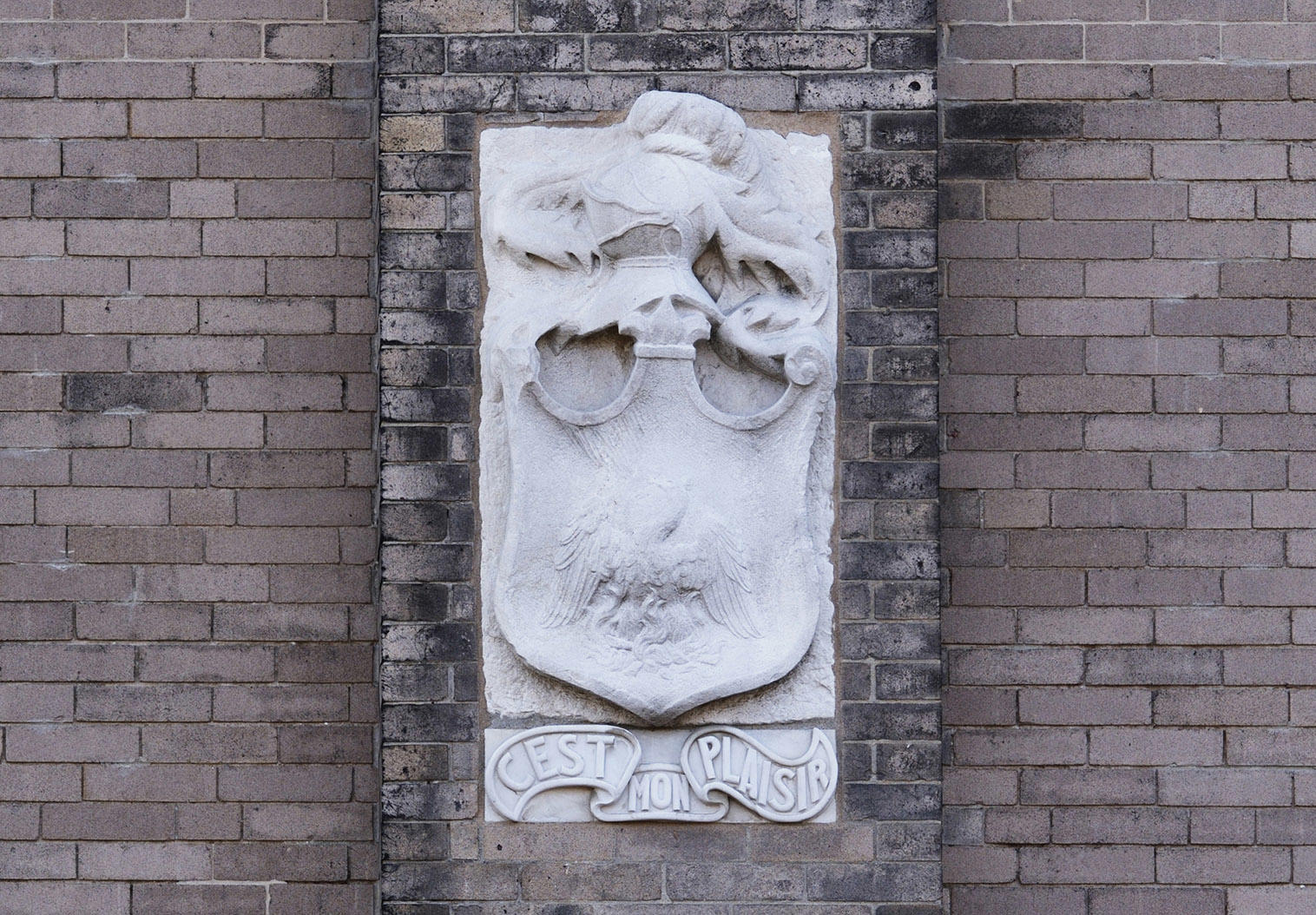
Sarah Wyman Whitman (American, 1842–1904, designer) and John Evans and Company (active Boston, 19th century, stone carver), Crest of the Isabella Stewart Gardner Museum: C'est Mon Plaisir, about 1900
Whitman was one of Isabella’s few trusted friends who saw the Museum during its installation in 1902, a year before it opened to the public. Moved by her friend’s unconventional aesthetic, Whitman wrote that her first visit threw her into “a ferment of joy and deep delight.” She was particularly taken with the Gothic Room.
The sight of the long table before the fireplace in the Gothic Room on which there are some iron boxes & to me, well, it has to me the simple note of perfection...
— Sarah Wyman Whitman to Isabella Stewart Gardner, 10 January 1902
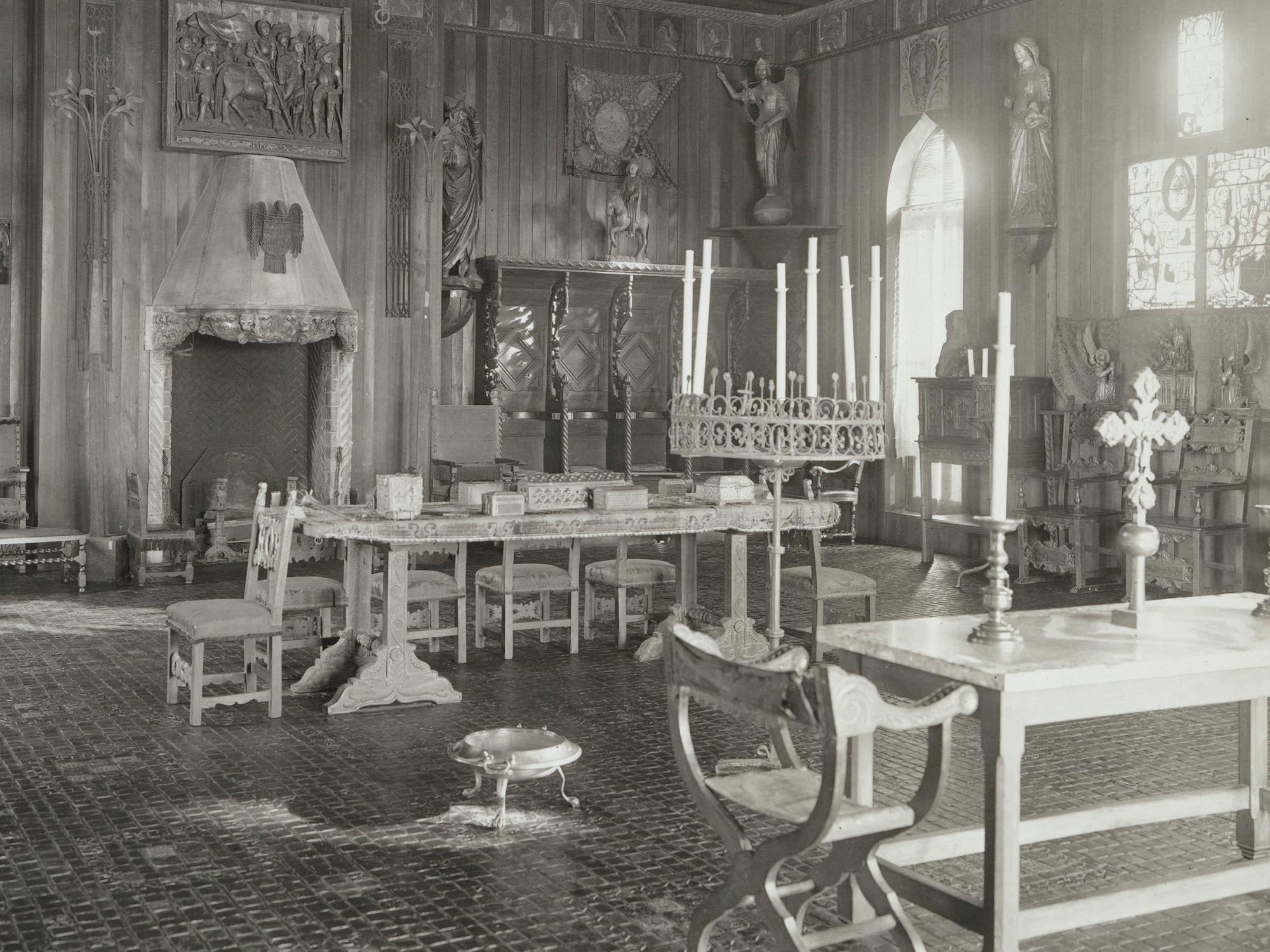
Thomas E. Marr and Son (active Boston, about 1875–1954), Gothic Room, Isabella Stewart Gardner Museum, 1926
Showing the arrangement of boxes that Sarah Wyman Whitman admired
Sarah Wyman Whitman died a year after the Museum opened to the public. In honor and admiration for her friend, Isabella provided the flowers that filled Trinity Church for her funeral and ensured that her work lived on in her Museum. Today, Museum visitors can experience Whitman’s work—with pleasure.
*Trustees of the Isabella Stewart Gardner Museum, Documents Regarding the Incorporation of the Isabella Stewart Gardner Museum, 1900 (ARC.007324)